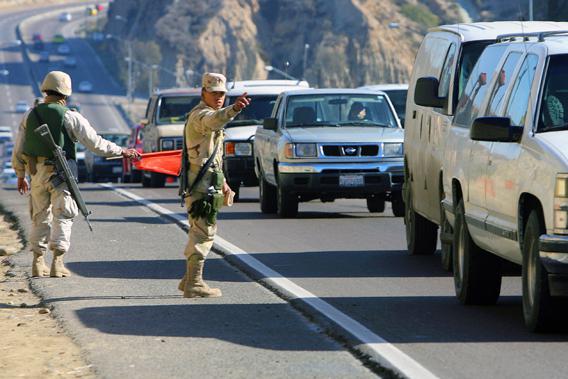Republican Sen. Chuck Grassley of Iowa kicked off Senate hearings on immigration reform with the idea that “given the events of this week,” we ought to put terrorism concerns near the top of our list of priorities when changing the system. To Grassley, a longtime immigration skeptic, that means primarily asking, “How can we beef up security checks on people who wish to enter the U.S.?”
But while security checks should be done and should be done properly, by far the best way to keep dangerous foreigners out of the country is to make it easier for nondangerous ones to enter. Border security is a wonderful thing. But in the absence of adequate legal channels for immigration, a large human smuggling industry will spring into existence to serve the needs of economic migrants and leave the country more vulnerable to real security risks.
Start with the key question: Why do people violate America’s immigration laws? For the overwhelming majority, it’s not to blow things up—it’s to work.
People come here from Mexico because they can earn higher wages. Americans are, on average, much richer than Mexicans, so we can afford to pay more for our maids and our gardeners. The United States also has more and better capital equipment than Mexico, so people who work here are more productive and can earn more. Crossing the border to work is lucrative, in other words, so people do it.
It’s lucrative, but in most cases, it’s also illegal. Making something that’s lucrative illegal has rarely stopped it from happening. Marijuana is illegal, but there are still plenty of people around who are happy to sell you some. What prohibition does first and foremost is alter prices. If marijuana were legal, it would be much cheaper. By the same token, making it illegal to cross the border makes it more expensive to cross—not impossible to cross.
Between 1993 and 2006, the United States drastically increased spending on controlling its southern border. This didn’t stop unauthorized migrants from crossing to work and settle. But that doesn’t mean the border-hardening had no impact. Wayne Cornelius, a researcher at UC–San Diego, has conducted decades of field research among Mexican migrants to the United States that shows that the tighter border led to a booming people-smuggling industry. By 2006, more than 90 percent of unauthorized border crossings were assisted by a coyote. And according to Cornelius, “The fees that smugglers can charge have tripled since 1993.”
More recently, net migration from Mexico has fallen to zero. The Obama administration likes to tout this as an enforcement success story to bolster its argument that reform needn’t cause a new boom in illegal border crossings. But to people who just don’t like the idea of foreigners coming here, the apparent success of Obama-era enforcement sends the message that crackdowns work.
Enforcement is part of the story, but an equally important part is that moving to the U.S. isn’t all that lucrative. The unemployment rate is high at 7.6 percent. The Latino unemployment rate is higher at 9.2 percent. The unemployment rate for people with no high-school diploma (a decent proxy for the labor market prospects of rural Mexicans who likely lack English literacy skills) is 12 percent. The construction sector, known especially as a key user of illegal labor, has been in a funk. Under the circumstances, it’s no surprise the coyote trade has gone into a deep freeze. But if the broader labor market comes back to life, smuggling will revive along with it. And while the overwhelming majority of smuggling is simply aimed at bringing people here to build houses and wash dishes, as long as the industry exists, it can be used by people with more nefarious motives.
Any serious border security strategy ought to emphasize establishing a big enough legal channel for migration to undercut the coyote industry. The immigration reform bill before Congress attempts to do this with a new W visa program for low-skilled guest workers. It would let 20,000 people come in the first year, rising to 75,000 by the fourth year, and then with a range between 20,000 and 200,000 workers in future years depending on labor market conditions. The only problem here is that even 200,000 may not be enough to squelch human smuggling. Michael Clemens and Lant Pritchett show that the Bureau of Labor Statistics is predicting much more growth in the quantity of jobs than will be fillable with a 200,000-person cap. That means that when the economy recovers, breaking immigration law will be lucrative again, just as it was 10 or 15 years ago. That means a rebound for the coyote sector with the dangers that it brings.
The W visa program as proposed would still be a huge improvement over the status quo. But it’s really not clear why the 200,000 cap exists. The W visa program is structured so that the number of visas issued in any given year will be pegged to labor market conditions. If the process for making that determination is sound, then by definition the cap can only come into play if labor market conditions indicate the need for more workers—precisely the situation that perversely gives rise to the human smuggling market. As Congress looks at this legislation through a security lens, it needs to keep this angle in mind. Establishing a robust legal channel for would-be economic migrants is a crucial piece of the border security puzzle.
Read more on Slate about the Boston Marathon bombing.
